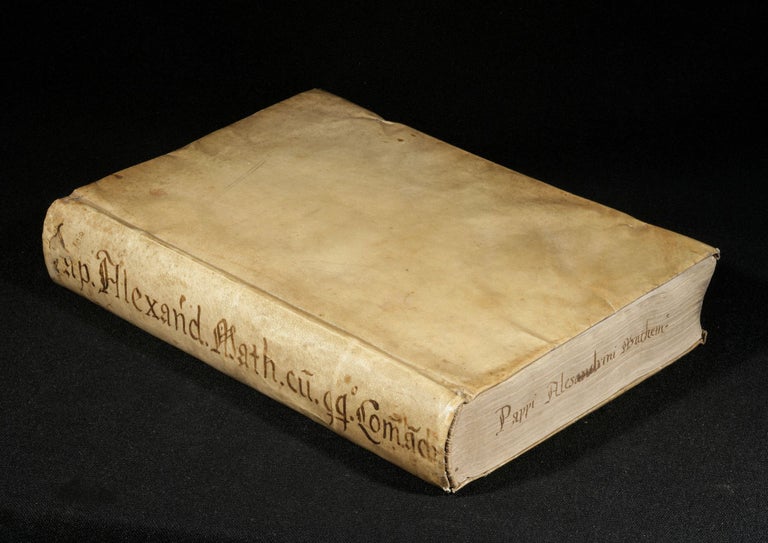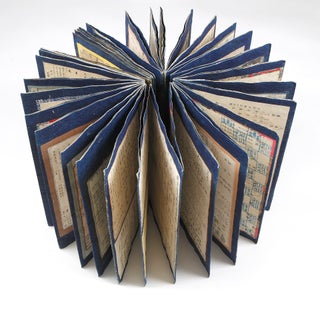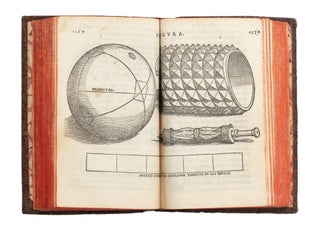
Mathematicae Collectiones. Ed. by Federico Commandino.
Numerous woodcut illus. & diagrams in the text. 4 p.l. (the last a blank), 334 (i.e., 332) pp. Folio, cont. limp vellum (title a bit soiled, last two leaves with some light dampstaining), ties gone. Pesaro: H. Concordia, 1588.
First edition and a very fine and fresh copy of this uncommon book; this edition, providing the complete extant text, was the final work to be edited by Commandino and completes his life's work of reviving Renaissance mathematics by making available the best mathematical writings of antiquity.
"In the silver age of Greek mathematics Pappus stands out as an accomplished and versatile geometer. His treatise known as the Synagoge or Collection is a chief, and sometimes the only, source for our knowledge of his predecessors' achievements. The Collection is in eight books, perhaps originally in twelve, of which the first and part of the second are missing...
"Book VII is the most fascinating in the whole Collection, not merely by its intrinsic interest and by what it preserves of earlier writers but by its influence on modern mathematics."D.S.B., X, p. 293-95(and see pp. 294-98 for a full discussion of the contents).
This concerns, in a passage on Apollonius' Conics, the attempt to conceive of the product of more than three straight lines as geometrical entities, known as "Pappus' Problem." Descartes devoted a major part of his own Géométrie to this, and solved it by the use of algebraic notation. "Pappus' problem thus inspired the new method of analytical geometry that has proved such a powerful tool in subsequent centuries. In his Principia (1687) Newton also found inspiration in Pappus; he proved in a purely geometrical manner that the locus with respect to four lines is a conic section, which may degenerate into a circle."D.S.B., X, p. 296.
Topics discussed in the other books include astronomy and mechanics.
A very fine copy preserved in a green morocco-backed box.
Rose, The Italian Renaissance of Mathematics, p. 214"Within 25 years of Commandino's death the first step in founding the mechanics of the seventeenth century was to be taken by Galileo when, in criticising the inclined plane theorem of Pappus, the Tuscan mathematician adumbrated the notion of inertia. This step was not taken in an intellectual vacuum, but represents the culmination of the mathematical renaissance that had been achieved by the Restauratores."(& see the whole of Chap. 9 for Commandino and this book). Smith, History of Mathematics, I, pp. 136-37.
Price: $25,000.00
Item ID: 399




